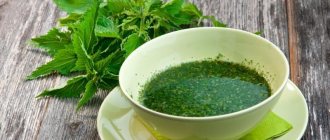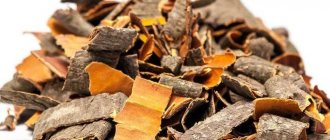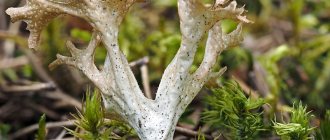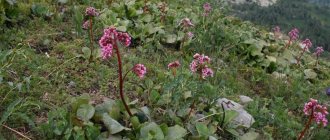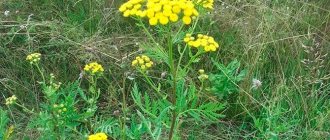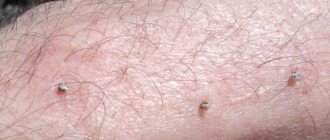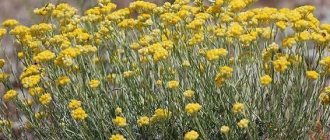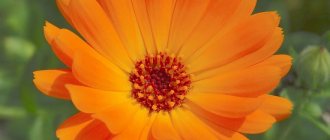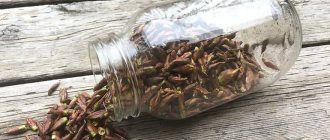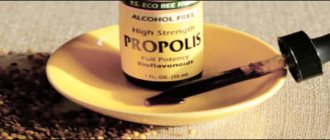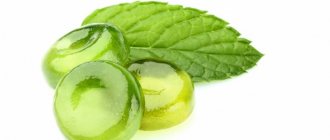The article was prepared by a specialist for informational purposes only. We urge you not to self-medicate. When the first symptoms appear, consult a doctor.
Chamomile is a medicinal plant that is known to everyone. Although most often we get to know her not for the purpose of treatment - lovers use daisies to tell fortunes, and girls gladly accept lush bouquets from their lovers. At this time, humanity has long noticed the beneficial effects of chamomile on the human body. Therefore, healers and healers used it to help a patient regain strength after a serious illness or to calm a person with nervous disorders.
- Recipe for chamomile infusion
- How to infuse chamomile?
- In what cases can you douche with chamomile?
- Chamomile tea recipes
- Anti-freckle mask
Beneficial properties of chamomile
First of all, chamomile is useful during the treatment of colds and viral diseases. Most often these include tonsillitis, acute respiratory viral infections and acute respiratory infections, and influenza. It can also be used when there is gas formation in the intestines or muscle spasms. This flower is undoubtedly useful for improving digestion. By stimulating the secretion of gastric juice through a gentle effect on the digestive tract and intestinal mucosa, chamomile increases appetite. It is a good adsorbent because, thanks to its beneficial properties, it absorbs toxins.
Experts also recommend chamomile for severe pain in the intestines, as it can reduce sensitivity and quickly relieve inflammation. Modern medicine uses the beneficial qualities of chamomile to help patients with gastritis (low acidity), diarrhea, flatulence, colitis and intestinal spasms. Thanks to this flower, the functions of the gallbladder and its ducts are properly stimulated. Its beneficial effect also affects the kidneys and liver. In a word, chamomile helps everyone - be it problems with the endocrine system or with the upper respiratory tract.
Many medications for treating seizures or stopping bleeding are made from chamomile. However, you should not assume that chamomile is only for sick people - it also helps healthy people sleep soundly and peacefully. Each of us experiences stress and nervous tension at certain periods in our lives. Chamomile helps to calm and relax, which also has a beneficial effect on our sleep. Please note that only pharmaceutical chamomile is used internally.
Chamomile is used not only in medicine, but also in cosmetology. A large number of cosmetic companies use the beneficial properties of this flower to produce creams specializing in sensitive skin. It is now quite clear why a good baby cream is also made from chamomile. We can also see it in toothpaste or soap, shower gel or shampoo.
Chemical composition of chamomile
Chamomile contains a large group of therapeutically active compounds. Sesquiterpenes, flavonoids, coumarins and polyacetylenes are considered the most important constituents. Coumarins are represented by herniarin, umbelliferone and other minor ones.
11 bioactive phenolic compounds such as: herniarin and umbelliferone (coumarin), chlorogenic acid and caffeic acid (phenylpropanoids), apigenin, apigenin-7-O-glucoside, luteolin and luteolin-7-O-glucoside (flavones), quercetin and rutin (flavonols) and naringenin (flavanone).
More than 120 chemical constituents have been identified in chamomile flowers as secondary metabolites, including 28 terpenoids, 36 flavonoids, and 52 additional compounds with potential pharmacological activity. Components such as α-bisabolol and cyclic esters have antimicrobial properties, umbelliferone has a fungistatic effect, while chamazulene and α-bisabolol have antiseptic properties. Chamomile has been found to have the most effective anti-leishmaniasis effect.
It turned out that the healing effect of chamomile is a consequence of its amazing composition, which includes a large complex of chemical elements. Its composition is unique, and makes it a miraculous flower. In ideal proportions, bisabolol oxide and essential oil, cadinene, farnesene, coumarin, choline, polysaccharides, phytosterol, and fatty acid glyceride are combined. Among the biological acids in its composition, noyl and isovaleric acid are distinguished. This flower also has antibacterial properties due to the presence of flavonoids in its composition. These include quercetin and luteolin. Only due to the presence of all these elements, chamomile has antimicrobial and antiviral properties.
Bisabolol has been found to reduce the amount of the proteolytic enzyme pepsin secreted by the stomach without any change in the amount of stomach acid, making it recommended for the treatment of diseases of the stomach and upper intestines.
5 facts about the benefits of chamomile
- Helps fight insomnia. Due to its high apigenin content, chamomile can improve sleep quality. Apigenin is an antioxidant that reacts with specific receptors in the brain and causes drowsiness. Taking chamomile is indicated for insomnia or chronic problems falling asleep and sleeping.
One study on the properties of chamomile involved women in the early postpartum period. Participants were given chamomile tea daily for 14 weeks. The control group received regular tea without chamomile. Two weeks later, women in the experimental sample noted improved sleep and a decrease in symptoms of depression [1].
Another independent study monitored the well-being of participants who took 270 mg of chamomile twice a day for 28 days. At the end of the experiment, they fell asleep faster - by an average of 15 minutes, and a decrease in awakenings - by 1/3 compared to the data recorded before the experiment [2].
Data obtained from research gives hope that a natural chamomile-based drug will soon be created that will help solve sleep problems. For now, doctors recommend drinking chamomile tea before bed.
- Improves your health digestive system. Normal digestion is the key to good health, well-being and immunity. The use of chamomile to improve the functioning of the stomach and intestines has been practiced for quite a long time. The active substances of the plant suppress the development of certain diseases of the gastrointestinal tract.
Evidence from several studies suggests that chamomile extract prevents diarrhea in young children. Experts associate this effect with the pronounced anti-inflammatory properties of the flower [3], [4].
The properties of chamomile were studied on laboratory animals. For example, in rats receiving chamomile extract, there was a decrease in the acidity of gastric juice and a decrease in the spread of bacteria that cause ulcerative processes. In addition, a decrease in the risk of developing gastric ulcers was recorded in animals [5].
Research into the effects of chamomile on the gastrointestinal tract in adults is ongoing. It is safe to say that it relieves nausea and prevents gas formation.
- It protects against certain types of cancer. Chamomile tea is rich in antioxidants that counteract the appearance of certain cancer processes. Chamomile is high in the antioxidant apigenin, which has shown antitumor activity in test tube studies. It turned out that apigenin is able to inhibit the growth and spread of altered cells in breast, skin, prostate, uterine and digestive cancers [6], [7], [8].
Another independent study was conducted on 537 adults who were offered chamomile tea 2 to 6 times a week. The analysis showed that the risk of developing thyroid cancer in these participants was several times lower than in those who did not drink chamomile tea at all [9].
- Helps control blood sugar. Chamomile flower tea has hypoglycemic properties - it reduces blood glucose. Due to its anti-inflammatory properties, regular consumption of the drink prevents damage to the structural cells of the pancreas responsible for the synthesis of insulin. Destruction of pancreatic tissue occurs against the background of prolonged, constant hyperglycemia.
Pancreatic health is important for the normal functioning of the entire body. After all, only she is capable of synthesizing the hormone insulin, which is responsible for the level of glucose in the blood and the removal of its excess.
A group of 64 patients with diagnosed diabetes mellitus was observed for eight weeks. Throughout the study, the experimental sample of participants received chamomile tea, and the control sample received a placebo. The final measurement of blood glucose levels in the first group showed a significant decrease in values. In the second group, blood sugar concentration did not change [10].
A study of the hypoglycemic properties of chamomile in animals on an empty stomach showed a decrease in blood sugar in all animals. Several studies indicate that chamomile tea may protect the body from post-meal sugar spikes [11].
Promising results from animal studies of chamomile tea have prompted a larger study in humans [12].
- Capable of healing the heart. Chamomile contains a large amount of flavonoids - a special type of antioxidants that have the ability to lower blood pressure and the level of “bad” cholesterol. As you know, hypertension and high cholesterol are risk markers for heart and vascular diseases.
In one experiment, 64 participants with diabetes were divided into two groups. The first one drank chamomile tea every day during meals, the second - water. It turned out that in the experimental group all subjects had decreased levels of total cholesterol, triglycerides, and low-density lipoproteins [10].
[Video] Chamomile is a universal healer:
What are the benefits of chamomile for women?
For its special properties, for its ability to have a beneficial effect on the female body, chamomile is popularly called the “girl’s flower.” Let us dwell on those qualities of the medicinal flower that have been proven by modern medicine.
- Reduces pain during menstruation. A 2010 study found that drinking chamomile tea regularly for a month relieves painful cramps associated with menstruation. Women who took part in the observation noted a decrease in irritability and anxiety that accompany premenstrual syndrome and can also be associated with pain. Subsequent studies have confirmed the ability of chamomile tea to alleviate pain during menstruation.
- Prevents and slows down the development of osteoporosis. Osteoporosis is a disease that is accompanied by a progressive decrease in bone density. The development of osteoporosis leads to changes in posture, stooping, and increases the risk of fractures. The pathology affects representatives of both sexes, but in women this risk is much higher and is associated with the onset of postmenopause. A number of researchers associate osteoporosis with the action of the hormone estrogen.
A 2004 study found that chamomile tea has anti-estrogenic properties. As a result of an experiment with a limited number of women, an increase in bone density was recorded.
Benefits for men
Introducing chamomile tea into a man’s diet can significantly improve his well-being and improve his quality of life. Chamomile relieves muscle spasms by stimulating the excretion of glycine in the urine. In case of chronic myalgia, drinking two cups of chamomile tea per day is sufficient.
Chamomile helps men cope with anxiety, balance the functioning of the nervous system, and streamline brain processes. Active phytocomponents stimulate the production of serotonin and melatonin, which reduce the manifestations of stress.
Special care products based on chamomile extract help men improve their skin condition and soothe irritation. Anti-inflammatory components help fight rashes and eliminate acne marks.
Regular consumption of chamomile tea helps improve men's health. For prostatitis, the substances included in the drink soften the painful symptoms of prostatitis, facilitate urination, and generally improve the condition of the genitourinary system. One of the most important properties of chamomile is to suppress the growth of hyperplastic tissue and prevent cells from degenerating into malignant ones.
Is it possible to drink chamomile during pregnancy?
Obstetrician-gynecologist Nadezhda Averyanova told us in detail about the benefits of taking chamomile for expectant mothers and pregnant women. First of all, the doctor points out that the use of chamomile in the form of decoctions and infusions should only be done after a conversation with your gynecologist. This condition must be met by women who are already expecting a child. The fact is that chamomile affects the synthesis of estrogen, a hormone, an excess of which can cause miscarriage or premature birth.
When used correctly, in a controlled manner, chamomile is safe in the form of drinks, douches, soaks, or inhalations.
During pregnancy, chamomile:
- Heals the skin.
- Calms nerves and helps fight anxiety associated with the upcoming birth.
- Eliminates symptoms of flatulence, normalizes stool.
- Suppresses the manifestations of toxicosis in the form of nausea and vomiting.
- Eliminates inflammatory processes.
- Provides the body with magnesium and calcium.
- Relieves symptoms of colds.
The listed properties are extremely important, since pregnancy is a contraindication for taking most painkillers, anti-inflammatory, and sedative pharmaceutical drugs.
Indications for use of chamomile
In official medicine, the use of chamomile is indicated for the treatment of:
- Diseases of the biliary tract.
- Acute, chronic diseases of the gastrointestinal tract, accompanied by inflammation of the mucous membrane (gastritis, enteritis, colitis).
- Respiratory diseases, in which swelling of the mucous membranes, cough, and bronchospasm are noted.
- Inflammation of the genitourinary system.
- Diseases caused by any allergens (gastritis, bronchial asthma, eczema).
- Sleep disorders, insomnia.
- Migraine.
- Toothache.
- Flatulence, stomach cramps.
- Hepatitis A.
- Malaria.
- Painful menstruation.
- Uterine bleeding, as well as postpartum metrorrhagia.
In addition, taking chamomile in the form of a decoction or infusion is useful for decreased appetite, fatigue, and intense physical activity.
Externally, chamomile is recommended as part of complex therapy:
- Inflammatory processes of the skin, thermal damage, superficial ulcers - in the form of lotions.
- Stomatitis, periodontal disease, gingivitis, sore throat - in the form of a rinse solution.
- Hemorrhoids - as microenemas.
- Inflammatory processes of the eyes - like washing.
- Joint diseases (gout, arthritis, rheumatism) - in the form of poultices.
- For problem skin, pimples, acne - as a means for wiping and washing.
It is advisable to use chamomile for no more than three months. If no improvement is observed, it is necessary to reconsider the treatment program. Typically, therapy is tolerated easily by patients, without the appearance of side symptoms or allergic reactions.
Possible side effects
If the recommended dosage is followed, adverse reactions to taking chamomile preparations rarely occur. Since chamomile oil has a more pronounced effect than a water infusion, its use is more likely to cause side effects. Not excluded:
- skin allergic reactions;
- diarrhea;
- nausea and vomiting.
When using chamomile preparations, you must follow the dosage indicated in the instructions, otherwise you can harm the body. An overdose can manifest itself as headache, weakness, and tachycardia.
If recommended doses are exceeded for a long time, depression of the central nervous system and decreased muscle tone are possible.
Chamomile decoction
In order to prepare a miraculous decoction or tea, you can collect chamomile flowers yourself. However, please note that chamomile has different varieties, which determines the effect of its use. Therefore, if you have never done this and do not know the differences, then it is best to purchase it at any pharmacy. For example, if you plan to take chamomile decoction or tea internally, then you definitely need pharmaceutical flowers, and if you were recommended to use chamomile externally, then only the fragrant variety will suit you.
Recipe for chamomile infusion
There are several ways to do this.
1 way. Chamomile flowers can be immediately poured with boiling water in any convenient container and left there for about an hour. After an hour, your decoction is ready for use.
Method 2. If you want to make a strong infusion, you will need to use more flowers but less water. This mixture must be kept in a water bath for about thirty minutes, after which you can pass it through cheesecloth. If necessary, the decoction can be diluted with water.
3 way. Place chamomile flowers in an enamel bowl and fill with water. Place on low heat. All you have to do is wait for the broth to boil and after a couple of minutes you can remove it.
Chamomile for bathing newborns
Baths with chamomile are indicated for babies two weeks after birth, in case of complete healing of the umbilical wound. Bathing in chamomile decoction is carried out 1-2 times a week - this is enough for a healing effect. The best time for water procedures is before bed, some time after feeding. It is not recommended to bathe a newborn immediately after feeding to avoid regurgitation.
Before the first bath, it is necessary to conduct a sensitivity test to chamomile. To identify a possible allergy, you need to drop a little ready-made, not hot, decoction on the baby’s skin and wait 1-2 hours.
If a child has increased sensitivity to plant components, the following may occur at the site of exposure:
- Swelling.
- Redness.
- Edema.
- Rash.
- Itching.
If no local reactions appear, you can safely prepare for bath procedures.
To prepare a decoction for a bath for a newborn, loose raw materials from dry grass or filter bags filled with chamomile are suitable. If you have filter bags, fill them with 150 ml of boiling water and leave for 20 minutes under a closed lid. If you have loose chamomile, pour 1 tablespoon of the raw material into a glass, pour 200 ml of boiling water, and cover with a lid. After 30 minutes the broth is ready. It is important to remember that chamomile is not boiled! When boiled for a long time, it loses its valuable properties.
The prepared fresh broth is filtered and poured into a bath of water at a comfortable temperature, but not higher than 37°C. Bathing lasts about 5 minutes. After the procedure, the child should not be rinsed additionally with water; the skin will continue to absorb nutrients. The baby's body is blotted with a soft diaper or towel.
Proper bathing in chamomile decoction helps keep babies' skin clean, improves appetite, and sleeps soundly.
Camomile tea
Chamomile infusion is now used for most diseases. After all, it is an analgesic, anti-inflammatory, emollient, choleretic, astringent, carminative. And that's not all. The infusion can and should be taken if the patient has gastrointestinal or colds, cramps and stomach pain, constipation, diarrhea, insomnia or cramps. There are many indications for the use of chamomile infusion. The infusion can also be used to wash purulent wounds, abscesses, ulcers, gargle during a sore throat, etc.
How to infuse chamomile?
The chamomile infusion is designed exclusively for internal use.
To begin with, chamomile is poured with boiling water and infused for some time. In order for the resulting infusion to be pure, it is necessary to strain it through cheesecloth so that all particles of the flower do not get into the drink. If necessary, this process must be repeated several times. The resulting infusion is used a couple of minutes before meals.
Among the numerous indications for chamomile infusion are the presence of gastritis (low acidity), intestinal spasms, inflammation of the gallbladder, neuroses and other things. The infusion has anticonvulsant, antiseptic, anti-inflammatory, choleretic, analgesic, diaphoretic and sedative effects.
Use of chamomile infusion
Chamomile is an excellent remedy for dyspepsia, liver diseases, chronic colitis, flatulence, kidney and liver diseases, bladder diseases, migraines and more. This infusion can be used to gargle and rinse the mouth. In addition, it is used for compresses and lotions during inflammatory skin diseases or hemorrhoids.
In cosmetology, chamomile is also an excellent remedy for facial skin. For example, to improve skin health, facial washes are prescribed, and to strengthen hair, daily washing with chamomile infusion is prescribed. In addition, the flowers of this plant have been used in perfumery for centuries. Chamomile extract is available in creams, shampoos and lotions. Many spa salons and beauty centers also use chamomile in their treatments.
How to prepare?
Chamomile-based infusions or dietary supplements can be purchased at any pharmacy. But, if you want to prepare this medicinal plant yourself, then you need to do this at the end of June or beginning of August. Chamomile inflorescences are used for treatment. They need to be collected in dry weather, away from highways and industrial enterprises.
Chamomile should be dried in the shade. The room must have good ventilation. The resulting raw materials for decoctions and infusions can be used for no longer than a year. Then, its medicinal properties noticeably deteriorate.
Douching with chamomile
You can hear from any doctor that chamomile infusions and decoctions are a good laxative, choleretic and antispasmodic agent. And in the field of gynecology they found excellent use for it. Patients who suffer from thrush due to taking medications are often prescribed douching with chamomile infusion. In cases of timely treatment, you can do only with douching without taking antibiotics. If possible, it is better to avoid drug treatment. Chamomile decoction is considered a natural and environmentally friendly remedy, which is why it is used in most cases. For the production of intimate hygiene cream, chamomile extract is the main ingredient. With its help you will quickly and effectively get rid of itching and discomfort.
In what cases can you douche with chamomile?
For thrush. Almost every woman faces the problem of inflammation and irritation of the mucous membranes and skin of the genital area. It is often caused by candida fungus, also called thrush. This unpleasant process can really be stopped by taking a few syringes of chamomile decoction. The secret is that this decoction contains saponins, which are organic components. Thanks to this, a sedative and cleansing effect is observed, but it does not result in dryness.
With erosion. Of course, if you start cervical erosion, then chamomile infusion is unlikely to help. However, in the initial stages these procedures can be quite effective.
For cystitis. Unfortunately, cystitis is now not a rare disease. Basically, its treatment is carried out with the help of warm baths, but douching also does not harm. Moreover, you can combine these procedures. Douching of the genitourinary tract is necessary to prevent another source of infection from arising there.
How to do douching with chamomile?
To prepare chamomile infusion, you need to take two tablespoons of dried inflorescences and one liter of water. Chamomile is poured with boiling water exclusively in enamel containers. After this, the solution must be placed on low heat and brought to a boil. Some experts believe that it is best to combine such a decoction with another anti-inflammatory agent - with calendula inflorescences. They are added at the very beginning of making the decoction. One tablespoon is enough. After this, let the broth cool to 37 °C, after which it can be filtered through gauze, which should be folded three to four times. As a result, we get an infusion that is poured into the syringe.
To properly carry out the douching process, you need to choose a comfortable position. There are several options for body position - you can lie horizontally, and place a medical vessel under the pelvis, or you can douche right in the bathtub, with your legs bent at the knees and placed on its side. There is nothing complicated about this, the main thing is to choose a position that is comfortable for yourself. In order for the douching process to proceed correctly, you must try to relax the vaginal muscles as much as possible in advance. Chamomile infusion is administered carefully without excessive pressure. Please note that it should not end up in the uterine cavity, as this can lead to new inflammation. This process should take you ten to fifteen minutes. It is best if you douche immediately before bed.
Contraindications to douching
Despite some benefits of douching, you should not overuse it. Still, this is an intervention in the usual microflora of our body, so you should not resort to this regularly. You definitely should not douche with chamomile during menstruation. Women over the age of 40 should also take care of their health and not resort to this method of treatment. Pregnancy is also a contraindication for douching - the timing is not important.
There is a rumor that chamomile infusion can increase the likelihood of conception. However, please note that all gynecologists say something different. Normal conception is possible only in the usual microflora.
What diseases does it treat?
The list of diseases that can be treated with chamomile is quite extensive. First of all, the flower has the following properties:
- antibacterial;
- anti-inflammatory;
- choleretic;
- anticonvulsants;
- antispasmodic;
- hemostatic;
- reducing flatulence;
- astringent and so on.
In ancient times, women often used the plant for gynecological purposes.
Even now, it can be used to treat and reduce the symptoms of such ailments as:
- dysmenorrhea;
- vulvitis;
- vaginitis;
- pyelonephritis;
- cystitis;
- colpitis;
- uterine bleeding;
- insomnia;
- swelling.
The bottom line is that for these diseases, the herb helps relieve and reduce the inflammatory process and works as an antiseptic. Chamomile is added to tea and is also used as a decoction for oral and external use.
Among other things, women use a large number of cosmetics with the addition of plant-based essential oils. They are found in shampoos, conditioners, creams, shower gels, face masks and so on.
Shampoo with chamomile
It is important to know how else chamomile in bags is used, its benefits and harms. Men can also use this plant. The influence of this flower on the body of the stronger sex is expressed in the following:
- lowering the pain threshold for prostate cancer;
- normalization of the genitourinary system;
- reducing the occurrence of seizures during physical activity;
- prevention of infertility and cancer;
- improving potency;
- increasing testosterone levels.
Chamomile on an empty stomach in the morning helps improve digestion and also improve the functioning of the stomach. The method is contraindicated for people suffering from gastritis, ulcers, and intestinal disorders.
A bath with chamomile is beneficial for the female body
Chamomile tea
Tea made from chamomile has an excellent calming effect. Depending on the dosage, this tea can not only relieve stress, but also prolong sleep. Thanks to these properties, chamomile tea is recommended for daily use after hard, stressful days. If you have already started taking any sedatives, then you need to drink chamomile tea more carefully.
In addition, this tea is considered a kind of analgesic, so it can also be used as a mouth rinse during the appearance of ulcers and inflammation of the gums. If you feel pain, the best remedy is chilled chamomile tea. Thanks to the beneficial properties of chamomile, you can easily relieve inflammation, gas, colic, cure diarrhea, abdominal pain and much more.
Chamomile contains a component called coumarin, which is a thinning agent. Please note that if you have already started taking any blood thinners, then you need to be extremely careful with chamomile tea. If chamomile tea is consumed regularly, you can reduce the risk of cancer, lower cholesterol, reduce inflammation and normalize blood glucose levels.
Chamomile tea recipes
Recipe 1. Classic chamomile tea. Two heaped teaspoons of dry chamomile are poured into a glass of boiling water (200 milliliters). Don't forget to cover the vessel with a lid or saucer. The tea should steep for approximately twenty to thirty minutes, after which it must be strained and squeezed. Chamomile tea is consumed in its pure form or together with other types of tea.
Recipe 2. Chamomile tea with peppermint. Chamomile flowers and mint leaves should be crushed and dried in advance. They are used in equal proportions - one teaspoon each. All this is poured with a glass of boiling water. In the same way, let the solution stand and strain it. You can drink this tea to calm down, as well as to prevent the appearance of gallstones.
Recipe 3. Chamomile tea with lemon balm. The method of preparing this tea is the same as the previous one. We just replace one ingredient with another. Believe me, thanks to lemon balm you will feel relief for your stomach. If you have a cold, this drink will be a real salvation. Use it warm several times a day, one glass at a time. This tea can also be taken along with honey.
Recipe 4. Chamomile tea with herbs. This tea contains medicinal plants such as sweet clover, peppermint, chamomile and St. John's wort. Take one coffee spoon of each component. Fill a glass with boiled hot water and cover with a lid or saucer. The infusion should stand for about half an hour, after which it can be expressed. This tea is consumed to reduce appetite, and also as a rejuvenating and cleansing agent.
origin of name
In the ancient world, the chamomile plant was known as chamaemelon, which translated from ancient Greek means “earth apple.” Chamomile was so named due to the aroma of its flowers, reminiscent of the smell of apples. In medieval Europe, the plant was called chamaemelon romana, the second word indicating the ancient Roman origin of the name.
In Russian, romana was transformed into “novel”, “romannik”, “romanov color”. By the end of the 18th century, the diminutive form of these names, “chamomile,” became widespread.
The scientific name Matricaria chamomilla was assigned to the plant in the 18th century. A doctor and botanist from Switzerland, Albrecht von Haller, decided to name one of the genera of the Asteraceae family - Matricaria, taking as a basis the Latin name for the uterus - matrix.
This word was not chosen by chance, because a close relative of chamomile, non-odorous chamomile, has long been used to treat gynecological diseases. Subsequently, three-rib was isolated into a separate genus, and the name that appeared, thanks to it, went to the genus of the Astrov family, to which chamomile belongs.
The specific name chamomilla was introduced into the botanical classification by the Swedish botanist Carl Linnaeus, taking the Latin name chamaemelon as a basis.
Chamomile baths
The use of chamomile as a bath additive is not only recommended by dermatologists.
In general, chamomile baths are effective in the complex treatment of a number of diseases:
- Dry, flaking skin.
- Increased anxiety, nervousness, poor sleep.
- Chronic fatigue.
- Cramps in the leg muscles.
- Cracked heels, trophic ulcers.
- Superficial ulcers, wounds, abrasions.
- Liver diseases.
- Condition after radiation therapy.
The ground part of chamomile - stems, leaves, flowers - is used as herbal raw material. To prepare a bath, take 500 grams of chamomile, add 2 liters of water and boil for 10 minutes. The finished broth is filtered and added to a bath of water. The bath lasts no more than 30 minutes. The procedures are carried out every other day. The course of therapeutic baths is two weeks.
Traditional medicine recipes using chamomile
For the first time, the beneficial properties of chamomile were appreciated in folk medicine, and they began to use it to treat many diseases. Let's look at the basic recipes for preparing medicinal mixtures using chamomile.
- Tea to calm the nervous system. One teaspoon of chamomile is poured into a glass of boiling water. Infuses for an hour. Tea should be drunk before bed. If you are worried about insomnia, you can add a spoon of honey to it.
- If you have flatulence, then it will be useful for you to drink carminative tea. For it, you first need to mix six parts of chamomile, one part of cumin and four parts of valerian root. One cup of boiling water for one tablespoon of this mixture. All this should be infused for twenty minutes. You should take half a glass twice a day - in the evening and in the morning.
- Chamomile decoction against gum inflammation. This drink contains St. John's wort (1 teaspoon), horsetail, calendula and chamomile. All this requires half a liter of boiling water. The mixture should be infused for approximately thirty minutes. If your gums are inflamed, you can rinse with this decoction five to six times a day.
- For diseases of the bladder and kidneys, use warm chamomile infusion.
- Enemas with chamomile infusion are prescribed for intestinal diseases.
- If you are worried about stomach cramps or intestinal colic, you need to take one tablespoon of chamomile infusion before meals. To do this, pour 15–20 grams of chamomile into a glass of boiling water.
- Patients with cystitis will benefit from the following collection: knotweed grass, chamomile inflorescences, blue cornflower, St. John's wort, and corn silk. We take all components in equal parts. Take one and a half glasses of boiling water and pour tbsp. spoon of mixture. The solution needs to sit for an hour, after which we filter it. The infusion should be consumed after meals.
- Chamomile components are also present in most anti-obesity mixtures. Most often, such a collection consists of chamomile, common St. John's wort, birch buds, and wild strawberry leaves. We take 1 tbsp of each component. spoon. All this must be thoroughly crushed and mixed. Pour two cups of boiling water into three tbsp. spoons of mixture. The infusion should sit for approximately 12 hours. It should be consumed twenty minutes before meals, 2 times a day. Half a glass is enough. This infusion helps to establish salt metabolism in the body and remove harmful substances.
Similar species
When preparing chamomile, which is recognized by both official and traditional medicine, people sometimes confuse it with species similar in appearance, which do not have medicinal properties and do not even belong to the chamomile genus. This:
- Tripleurospermum inodorum - genus Tripleurospermum inodorum;
- dog's navel, dog's daisy (Anthemis cotula) - genus of navel
- field navel (Ánthemis arvensis) – genus of navel;
- Russian navel (Anthemis ruthenica) – genus of navel;
- common cornflower, popovnik (Leucanthemum vulgare) – genus cornflower;
- pyrethrum corymbosum, pyrethrum corymbosum - genus pyrethrum.
How to distinguish chamomile when collected from similar plants? First of all, of course, carefully examine the photo of each twin species; often the differences are visible immediately. It would also be a good idea to read botanical descriptions.
Use for cosmetic purposes
Chamomile is one of the most common components of caring cosmetics. Luckily, you can make some things from chamomile at home.
Anti-freckle mask
The active compounds contained in chamomile help whiten the skin and get rid of freckles. Take 20 g of fresh or dried flowers, pour boiling water over them. The composition is infused for 20-30 minutes, filtered through two layers of gauze. Add the juice of two lemons and 0.5 liters of yogurt to the liquid. All components are mixed. Gauze wipes are generously moistened with the resulting solution and applied to pigmented areas of the skin and areas where freckles accumulate. After an hour, remove the napkins and rinse your face with water. A rich cream is applied to the skin. To obtain the effect, lightening masks are applied to the face three times a week.
Remedy for facial redness
Chamomile decoction helps get rid of skin irritation and reduce areas of redness. Take a tablespoon of chamomile flowers, pour a glass of boiling water, cover with a lid. After an hour, add a tablespoon of honey to the broth, stir well until it is completely dissolved. Wipes are generously moistened in the solution and applied to the skin for at least 30 minutes. After drying, the napkin is moistened again.
For the treatment of acne
Pour 2 tablespoons of chamomile flowers and 1 tablespoon of dry celandine into a glass container. Pour the herbal mixture into a liter of boiling water and leave for 12 hours to infuse. After this, the product is filtered and poured into a bottle of suitable volume. Wipe the face with a sponge soaked in herbal infusion at least five times a day, paying special attention to the places where acne most often appears.
Chamomile for healthy hair
To prepare a therapeutic mask take:
- 4 tablespoons chamomile.
- 0.5 liters of boiling water.
- 1 egg yolk.
Chamomile is poured with boiling water and left for 30 minutes. Next, filter the product, add the yolk and mix thoroughly. The composition is applied to the entire length of the hair, covered with a plastic cap. After 30-40 minutes, the hair is washed with plenty of water. To obtain maximum effect, apply the mask 2-3 times a week. For blondes, this mask helps make their hair lighter and adds shine.
Collection and preparation
It is important to know that you need to collect inflorescences (baskets) from chamomile. They begin to harvest chamomile from May until the end of summer. To collect chamomile, you need to choose dry and sunny weather. It is necessary to collect plants that have white reed flowers located horizontally, and not those that have already begun to droop. During this period, the plant has the largest amount of biologically active substances. If the plant is collected late, then when dried, the basket will disintegrate and the essential oil will evaporate. The height of the peduncle should not be more than three centimeters. It is best to store in a tightly sealed container for no more than a year.
Release forms
Chamomile is included in many dietary supplements and herbal medicines and is available in the form of:
- Dry raw materials (dried inflorescences, tea, herbal mixtures);
- Liquid extract or tincture;
- Fat capsules with plant extract;
- Chamomile oil;
- Creams and ointments contain chamomile extract.
| Chamomile filter sachets | Chamomile flowers | Romazulin - liquid extract of chamomile | Chamomile oil extract |
Author:
Sabuk Tatyana Leonidovna hygienist, epidemiologist
